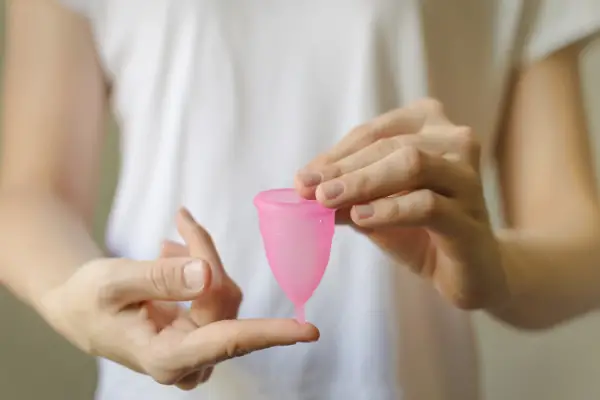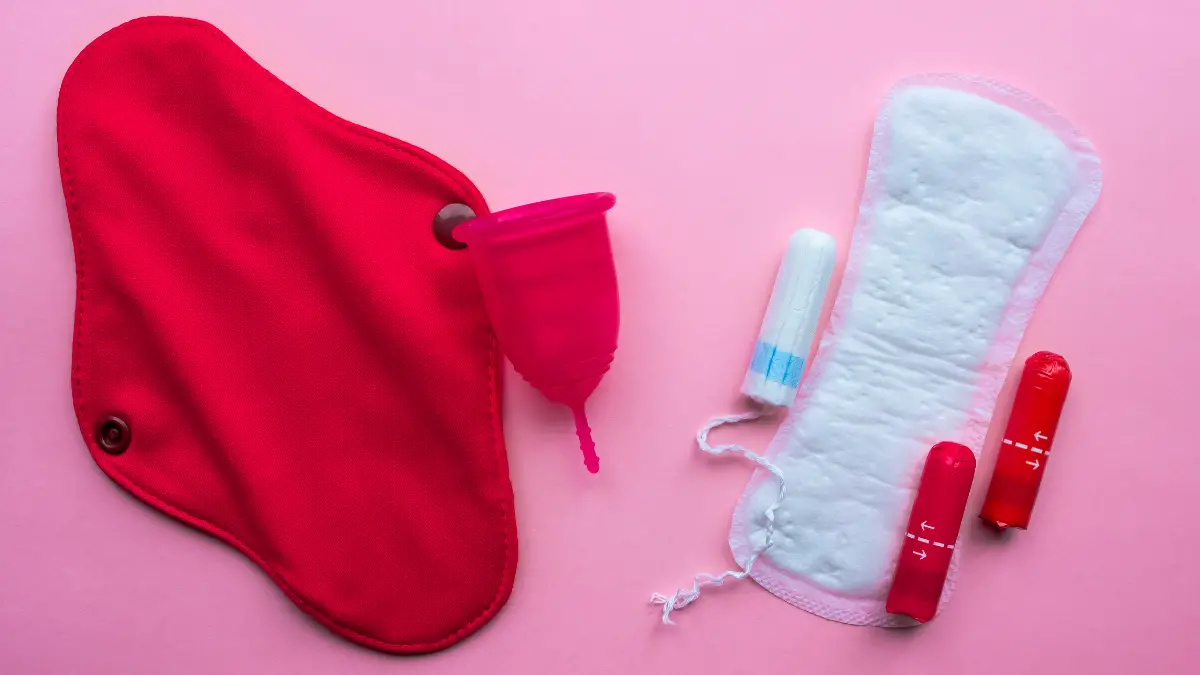Best Eco Friendly Period Products That Won’t Harm You (or the Planet)
At least once a month, billions of women out there face a single, age-old question: which sanitary products to choose for their period? A wide array of products have been advertised as eco friendly and natural. Will they be gentle enough on the planet while still being leak-free?
When looking for sustainable period products, you need to keep an eye on the whole supply chain, from production to distribution to, finally, use and disposal.
With all that in mind, these products still need to meet their primary purpose of being dependable enough to help us through the day when we’re at our most vulnerable.
What’s Wrong With Conventional Period Products?
Let’s begin with how tampons and pads are made, and what they are made of.
There is some cotton in our sanitary items. But the truth is, these products are made of plastic for the most part. That’s what makes them leak-proof. Plastic also makes your pads cling to your underwear so as to be more reliable. Plus they are coated, packed and stored in it.
And these are not exaggerations. A single hygienic pad has as much plastic as four single-use plastic bags!
Tampons are not much better. Even though they look pretty eco friendly, they still have tiny particles of plastic to make the structure firmer. The string is also, you guessed it, plastic. And even if you get a reusable tampon applicator, it will also be made of plastic.
So where does that get us on a large scale? Disposable menstrual products were invented around 1888 for nurses. They became widely available when Kotex realized their commercial potential in 1921. The rest is history. Over an entire century, almost every woman you’ve ever known, from your great-grandma to your daughter has been a part of this problem.
Today, an average woman will use no less than 11 thousand menstrual products over the course of her reproductive life. Multiply this number with over half of the world’s population. If we can’t even begin to imagine this pile of waste, how can we expect the earth to deal with it?
Women Products That Are Unhealthy for Women
What makes your pads and tampons so distinctly white? The answer is: bleach. Both non-organic and organic period products are bleached – the former with chlorine, the latter with peroxide.
White looks alright, but these substances can irritate your sensitive parts. And that’s not the worst scenario. They contain some amounts of dioxin and other toxic and even carcinogenic chemicals. These amounts are tiny, but over decades of use they add up to ample quantities of chemicals being absorbed directly through our skin. As if that wasn’t enough, some pads and tampons have fragrances, which are certainly not a natural additive.
To sum it up, you should pay special attention to ingredients even if you opt for organic cotton products. The fact that a product is plastic free doesn’t necessarily mean it’s healthy.
When choosing your next period product, the first feature you’ll want to look for is: reusable. Even if it’s not 100% biodegradable or natural, by reusing it you will spare the planet quite a lot of waste.
Menstrual Cups

I’ve heard (and seen) many women freak out at the mere sight of reusable menstrual cups. That thing really looks intimidating and, well, too big and uncomfortable for our intimate parts. Is it going to work? What if I can’t get it out? And how to get it in (and get it to seal) to begin with?
Plus, it really takes some getting used to. Get ready for at least a few epic fails. Do not under any circumstances try a menstrual cup for the first time when you’re planning to go out. (And try not to empty it in public restrooms for at least the first few months. Eek!)
But after some trials and errors, you will feel immense relief for not having to spend another second or another cent choosing your period products for a whole year. And if you’re a fan of eco friendly period, the feeling gets even better.
Anyhow, the most popular cup out there is probably the Diva Cup. Just like most other menstrual cups, it’s a simple bell-like thingy from medical grade silicone with no plastic or dye. The insertion process is simple: boil it, lube it, fold it, put it in, rotate until it seals. To remove it, reach for the stem, pull it out a little, pinch to unseal, and pull it out completely.
The product comes in three sizes which will depend on your age, birth history, and flow type. It’s overall one of the best eco friendly period products I’ve seen. Beginners will also appreciate the flexibility and softness of Saalt Menstrual Cup, which is another premium product.
Reusable Cloth Pads
Those of you who are not very keen on doing vaginal gymnastics could probably go with reusable pads such as Asenappy. They are just like your regular single use pads, except they are so much better both for your skin and the planet. It’s typically a few layers of cotton lined with bamboo fiber. There’s probably a little bit of plastic too to make it waterproof, but at least you’re going to reuse it.
This particular brand is for heavy flow and night use, which makes it great for working in an office too. But if your flow is not very heavy, consider getting Teamoy reusable pads.
If you’ve never used these before, remember that they will be difficult to wash unless you soak them in cold water prior to machine washing.
Period Underwear
How about not putting anything down there? Period panties sound like a perfectly comfortable and hassle-free solution.
The good news is there are many options when it comes to period underwear eco-friendly brands. ModiBodi is a great option for those who like bamboo, which is a perfectly sustainable material. There’s also 5% spandex, which is not nature’s best friend, but that’s what makes these panties waterproof. At its best, it should withstand two tampons worth of fluid without leaking.
Does period underwear really work?
In some cases, for very heavy flows, you still may need to use another product, however, nowadays period underwear works very efficiently and, worst case scenario, they will still save you from having to use panty liners.
What about maintenance though?
Cleaning period underwear is not as bad as some may think. Apply the usual treatment for blood-stained clothes. Just leave them in cold water for at least half an hour and then toss them into your machine. Note that they will last longer if you line dry them.
Organic Tampons
If you can’t give up on disposable tampons at all, go with organic cotton. Even though it’s not completely sustainable, it’s still more eco friendly than your regular cotton.
Organyc is one of the go-to brands here. Their tampons are 100% cotton without plastic particles or strings. They aren’t bleached with chlorine (though the company doesn’t mention peroxide bleaching). With no added dyes or scents, they are less irritating than non-organic cotton tampons.
Frequently Asked Questions
What are the best period products?
A good product is good for either you or the planet. The best product, however, is great for both. So the answer to this question is probably menstrual cups. They are made of silicone, which is far from being completely eco-friendly. Still, it’s a very small amount per cup, and it lasts a year or more.
And it doesn’t take much energy or water for maintenance either, which is the menstrual cup’s only advantage over reusable cloth pads.
What is safest period product?
No matter how hard advertisers try to persuade you that their product is 100% safe, you should know better than to believe them. Where your most delicate parts are concerned, there are no completely safe and unsafe products. There are only safe and unsafe practices and procedures.
Common sense would have us believe that the menstrual cup is the safest product. It collects blood rather than absorbing it, and prevents it from mixing with materials that could stimulate breed bacteria. However, even the cup carries the risk of the so-called Toxic Shock Syndrome. Ditto for tampons, organic or not.
So, whichever sanitary product you choose, make sure to maintain it properly and change it every 2-3 hours (5-6 at night). That’s the best possible guarantee of safety you can get.
Are tampons or pads worse for the environment?
Disposable pads and tampons do take a heavier toll on the environment than their reusable counterparts. As a rule of thumb, it’s always better to get a non-organic product that you can reuse for years than a 100% organic single-use product.





